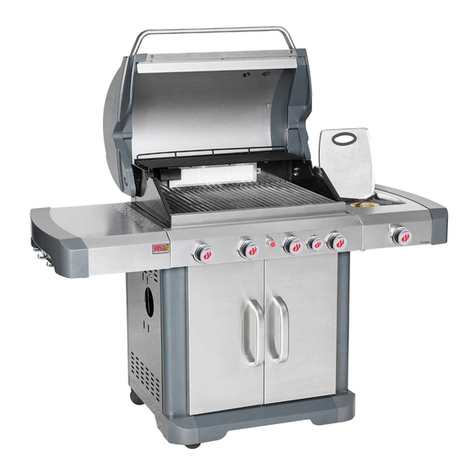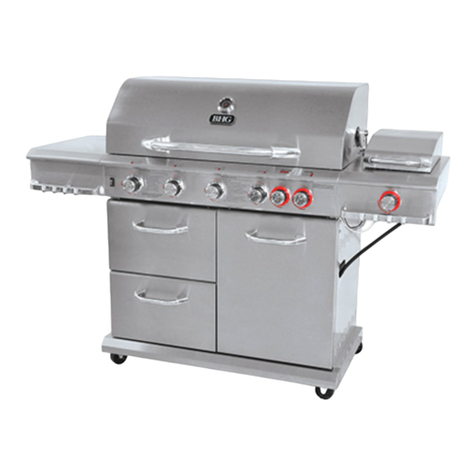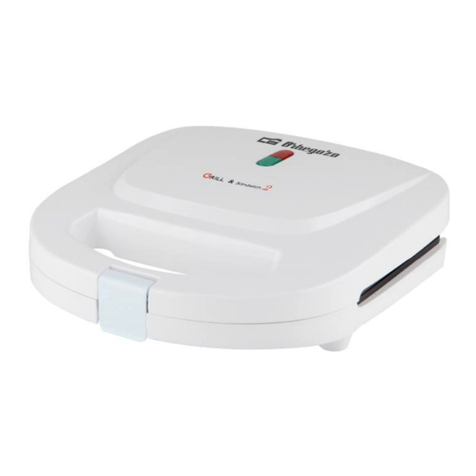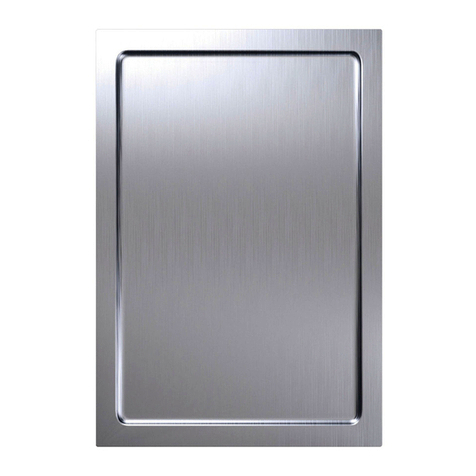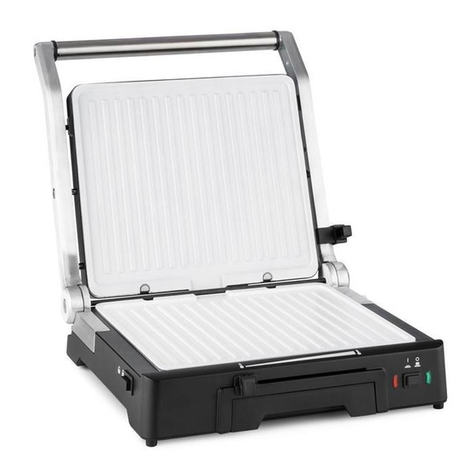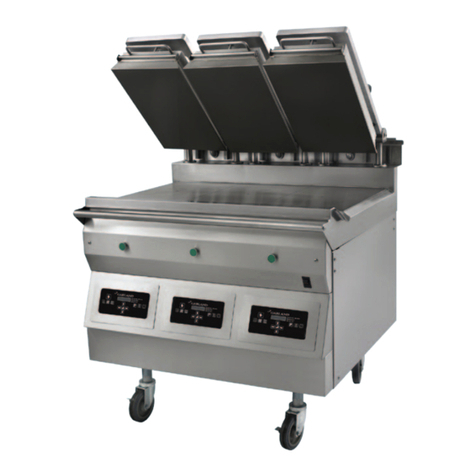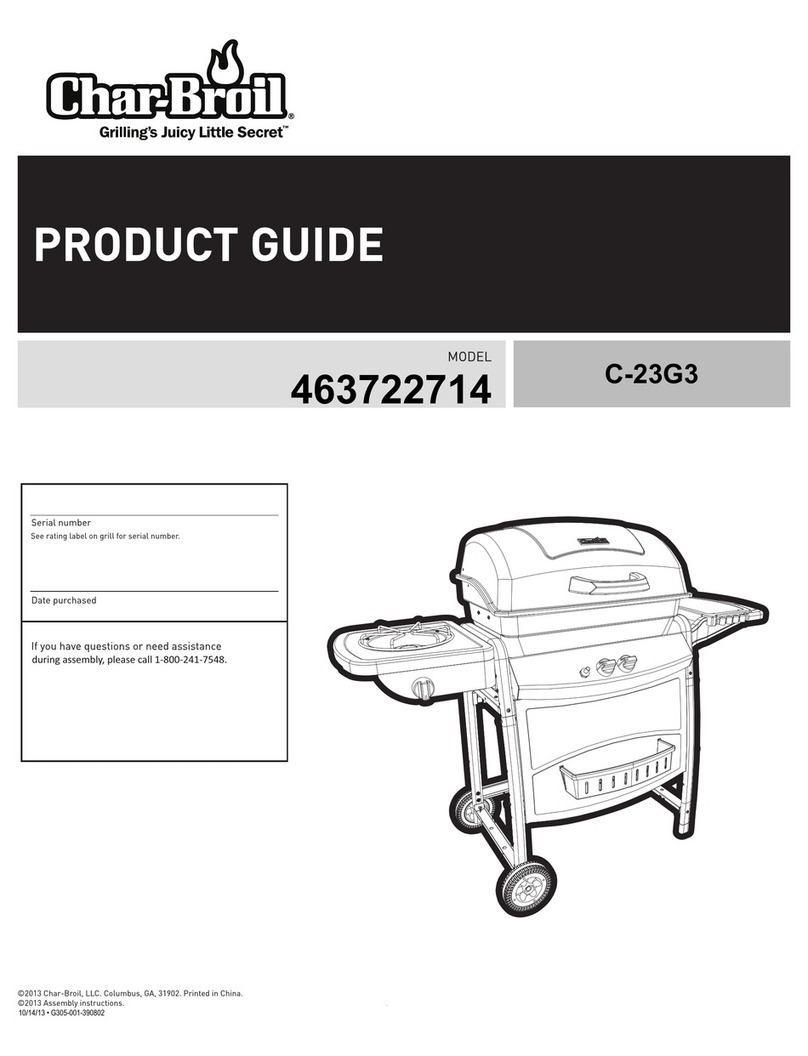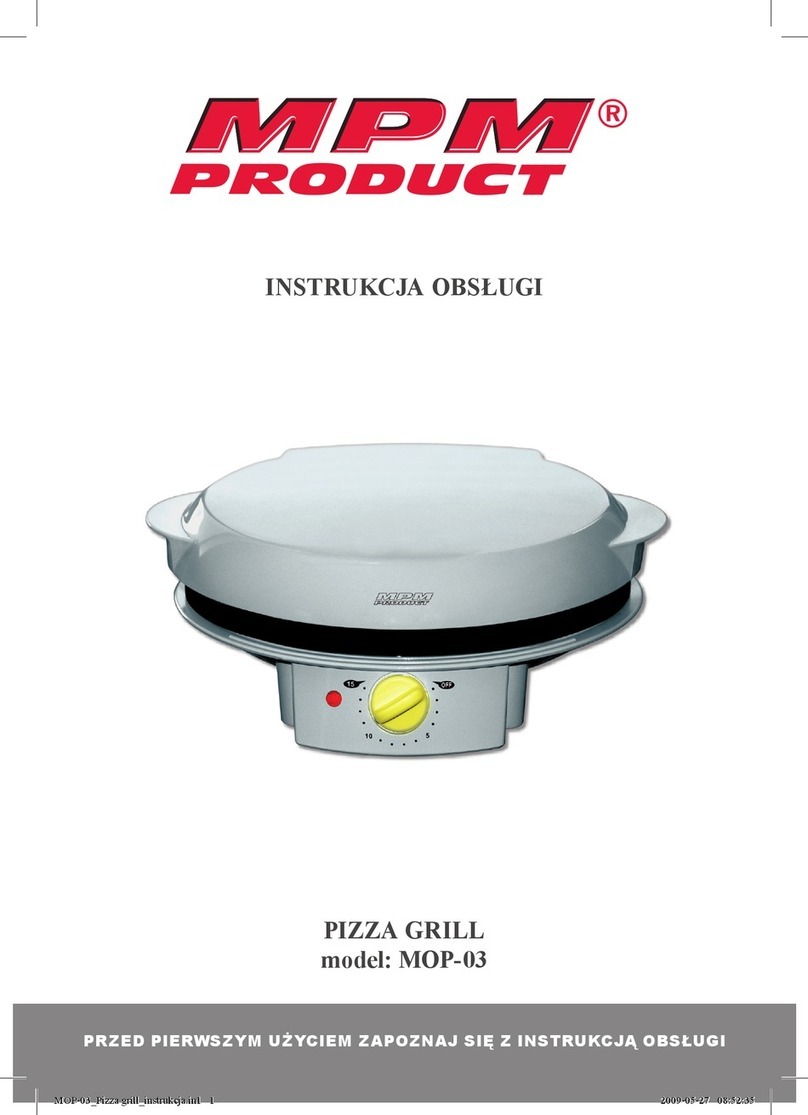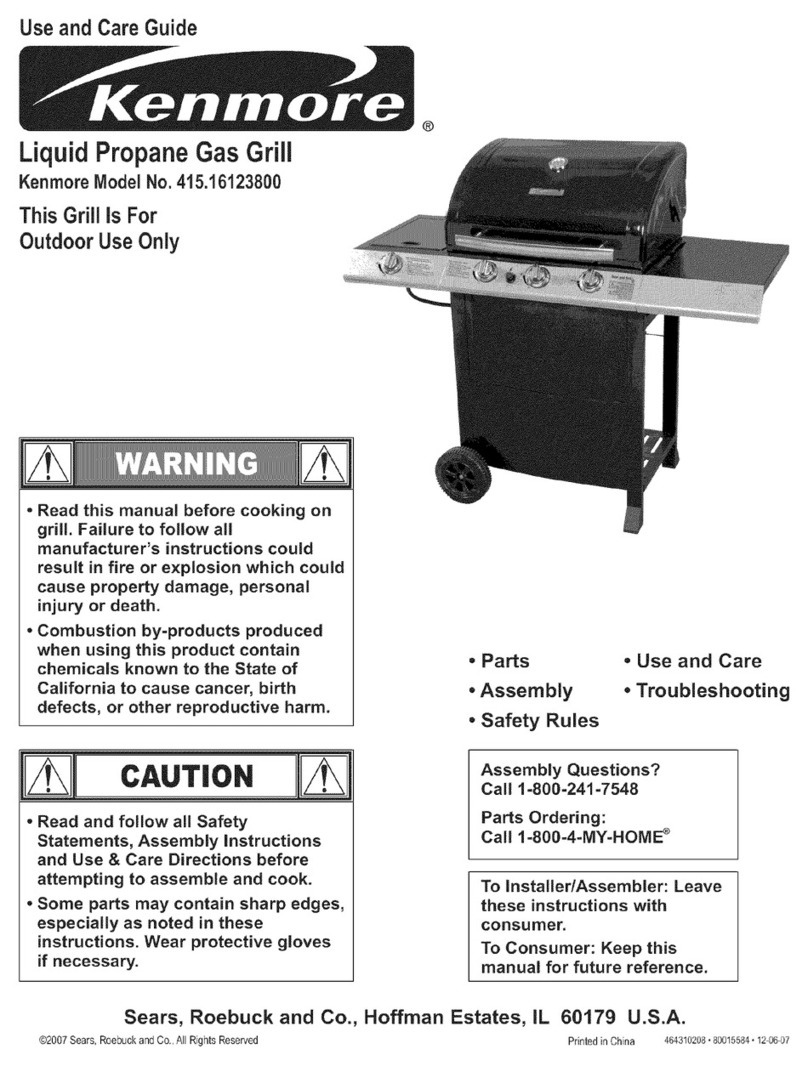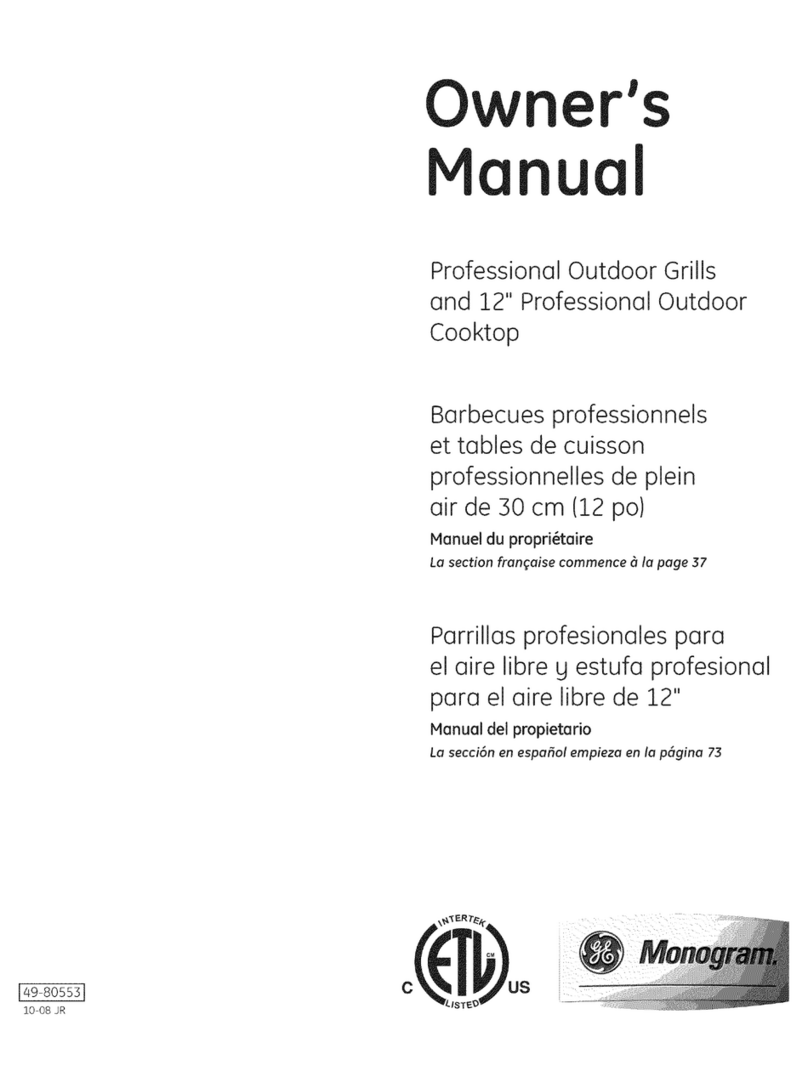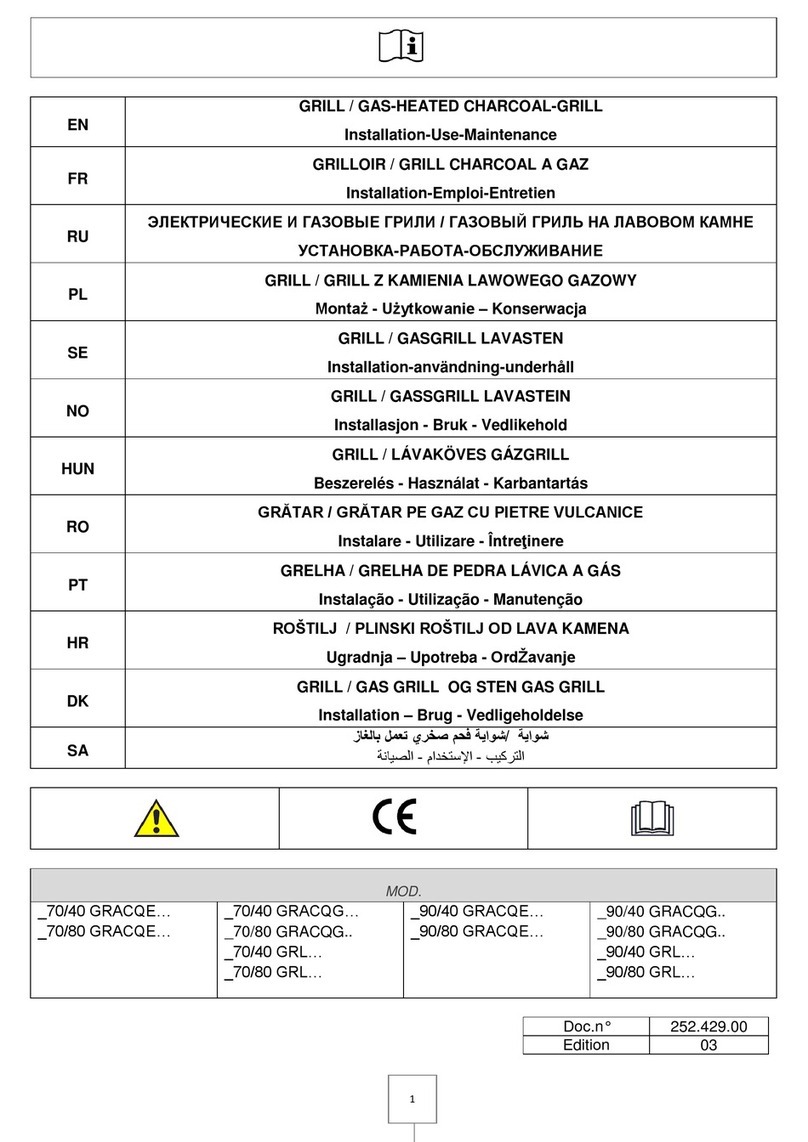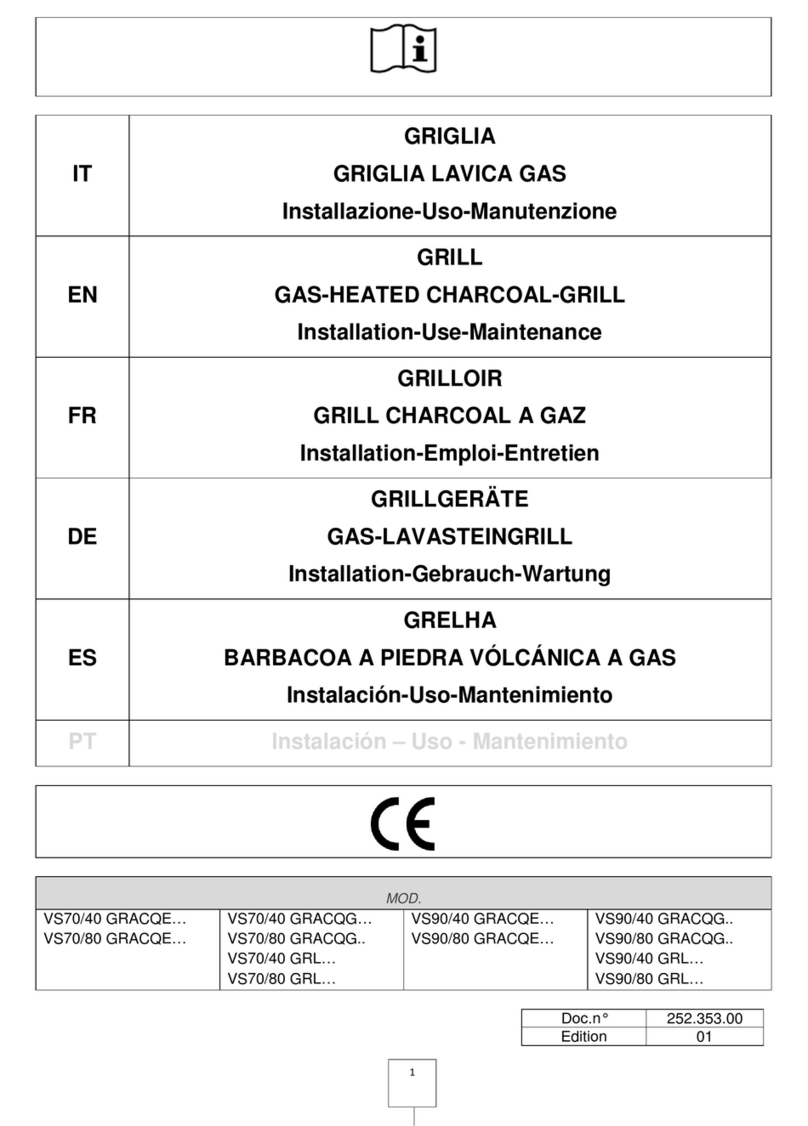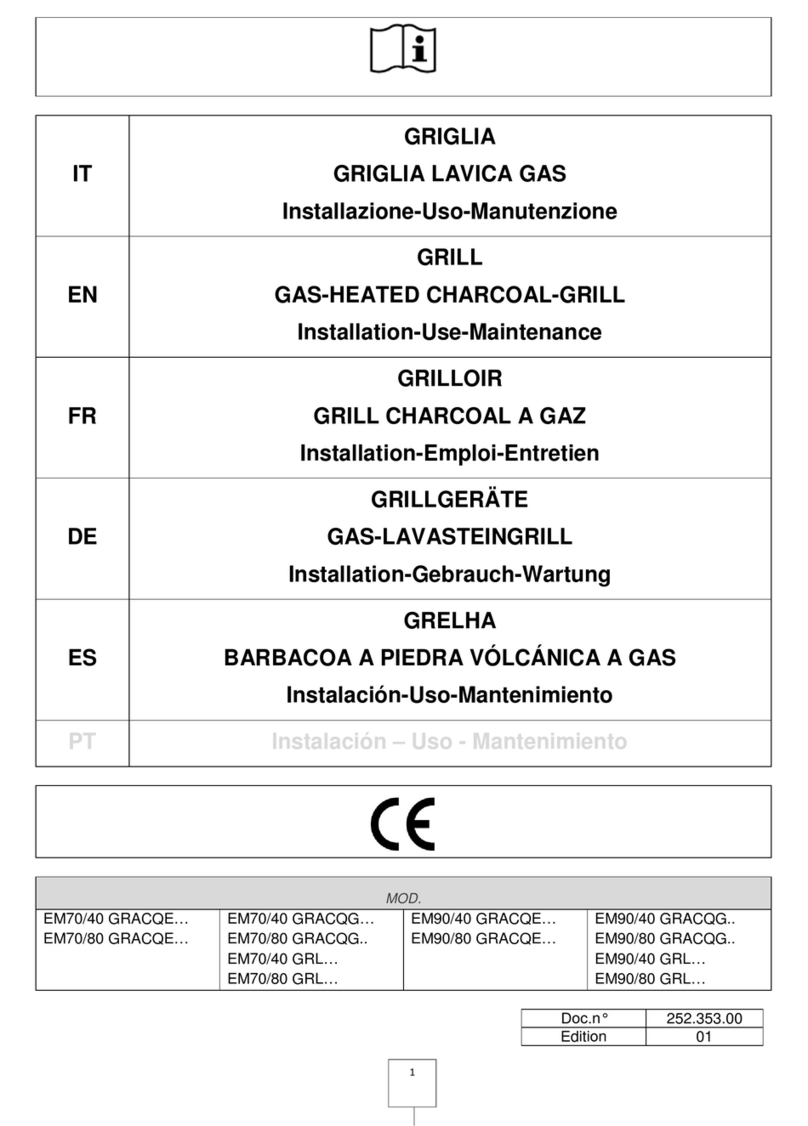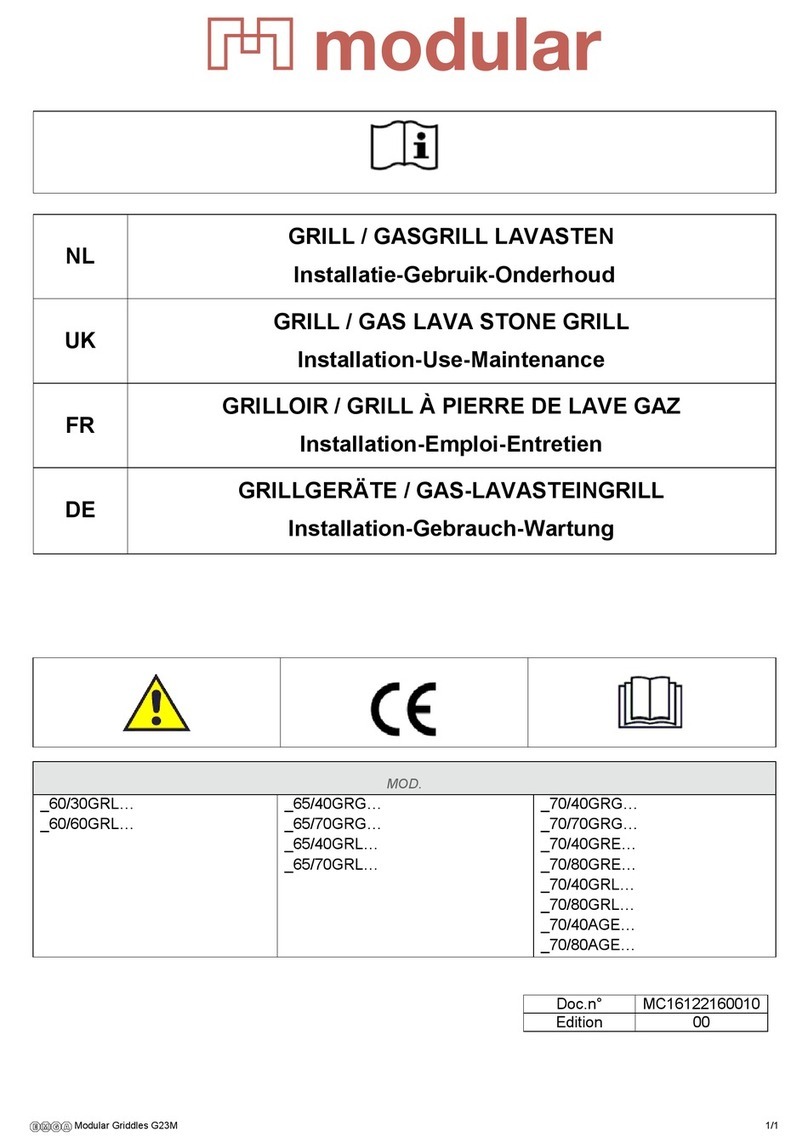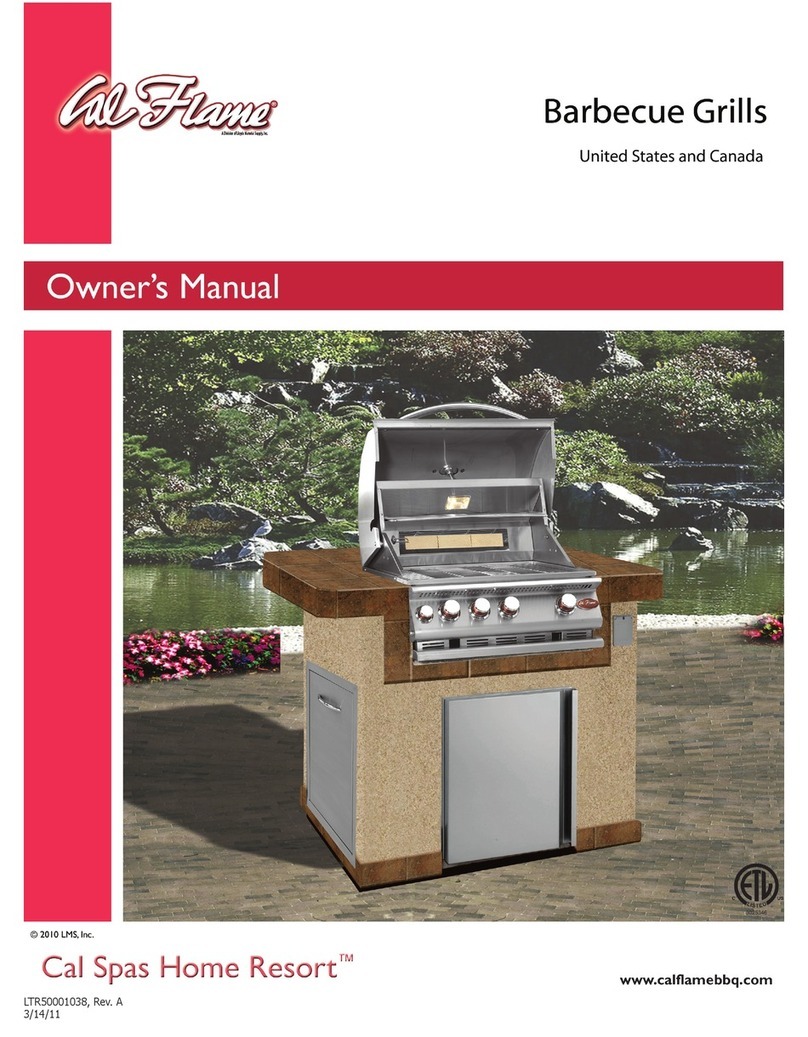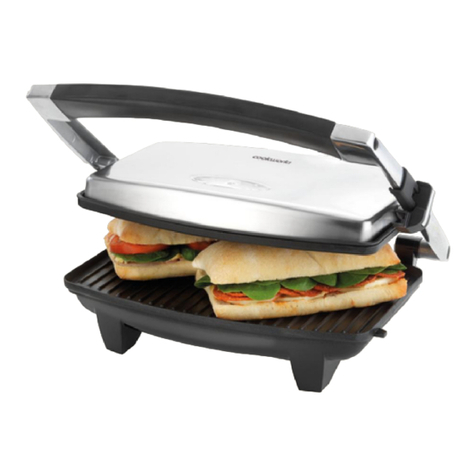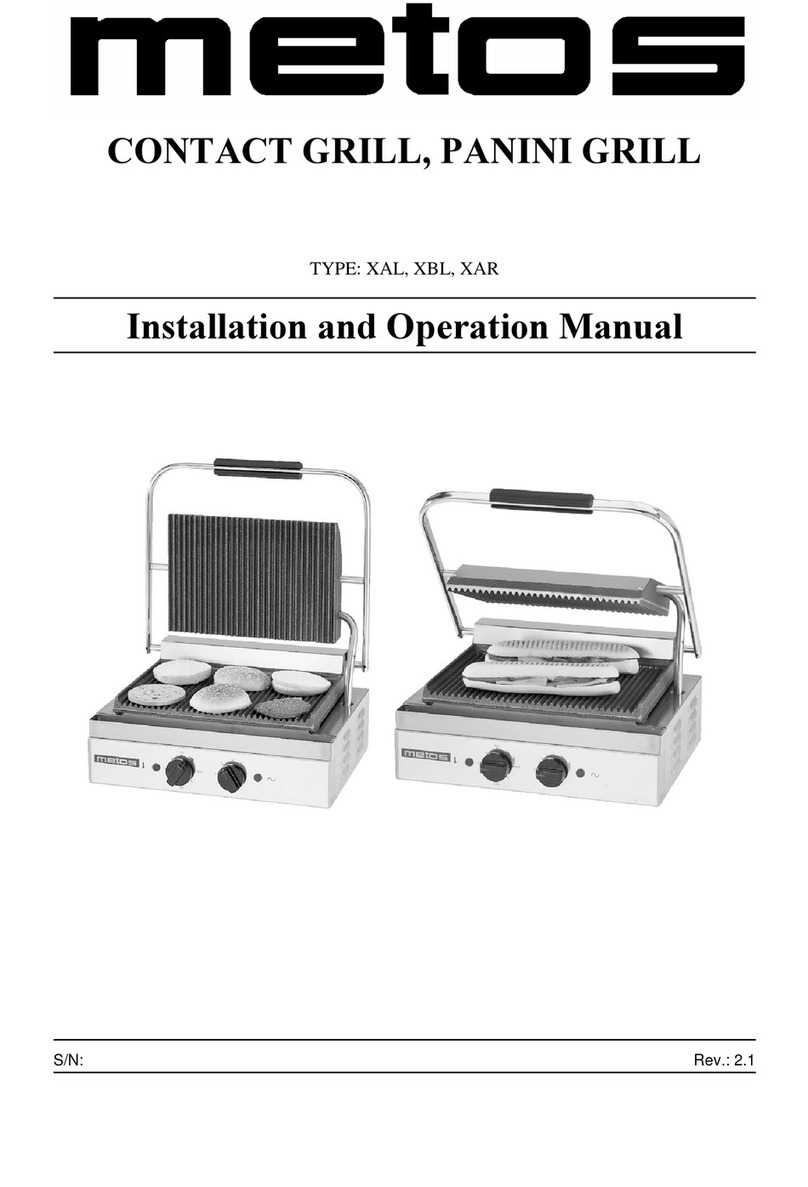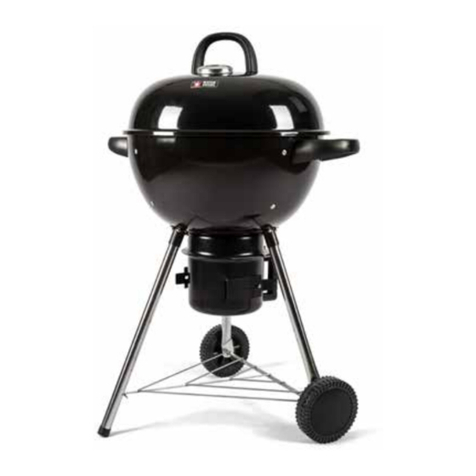
6 INSTRUCTIONS FOR THE QUALIFIED INSTALLER
6.1 APPLIANCE INSTALLATION
•Take the unit out of the packaging. Check that it is in good condition. If in doubt, do not use it
and contact professionally qualified personnel.
Always place the unit under an aspiration hood. After installation, it will need to be levelled by
using the feet.
•Always use rigid galvanised steel or copper pipes for connecting the appliance.
All the seals on the joining threads must be made using materials that are certified for use with
gas.
•If the appliance is wall mounted, in contact with flammable material, place a layer of heat-
resistant insulating material between the appliance and the wall or leave a space of 200 mm
between the appliance and the wall.
•The appliance gas system and the characteristics of the room in which the appliance is
installed must comply with current laws.
•Before connecting the unit, you must check what kind of gas it is set up to use, and whether the
gas which is available to power it is suitable. If the available gas is not suitable for the
appliance, proceed as described in the paragraph "Changeover for operation with other types
of gas".
•Always install a cutoff cock between each appliance and the gas pipe.
•Check that aeration in the room is sufficient when the appliance is working, considering that the
necessary quantity of air for combustion is 2 m³/h of air for each kW of installed power.
6.2 LAWS, TECHNICAL REGULATIONS AND GENERAL RULES
•Please follow the restrictions and the standards in force in the country where the equipment will
be installed.
•Accident prevention laws.
6.3 DISCHARGE OF FUMES FOR TYPE “A” APPLIANCES
The appliances must be installed on premises that are suitable for the discharge of the combustion
products and must comply with the installation rules. Our appliances are considered type “A” gas
appliances (see the Technical Data Tables) and are not for connecting to a natural discharge duct
for combustion products.
These appliances must discharge through specific extractors, or similar devices, connected to a
properly working flue or discharged directly outside.
If this is not possible, an air suction device can be used connected directly to the outside, with a
capacity that must be no less than that required, see Table 1, plus the quantity of fresh air that is
necessary for the well-being of the workers.
